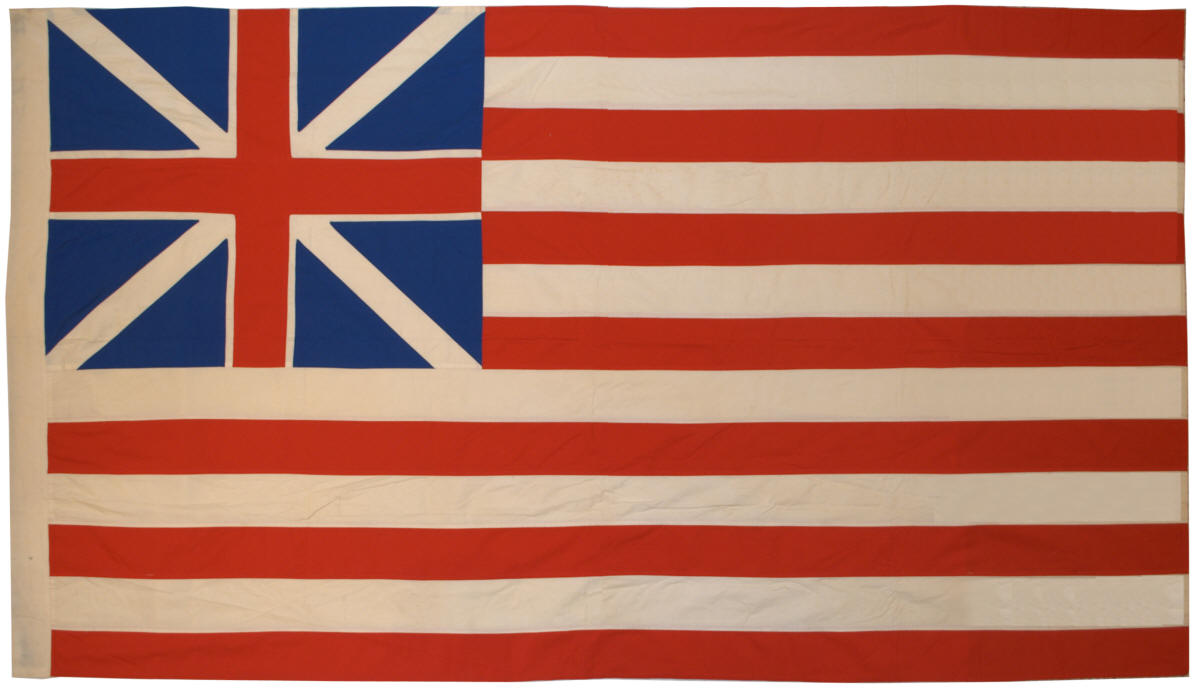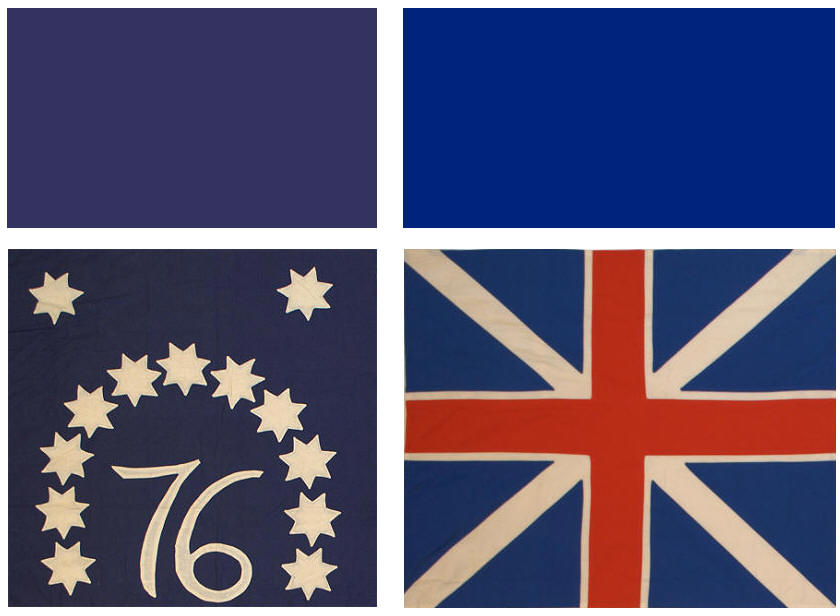
This expertly made flag
is a companion to the collection's homemade Bennington Flag (IAS-00331).
Both flags were found in Maryland and acquired for the
Rare Flags collection from the same person at the same
time. While the Bennington example is entirely
hand sewn, this fantastic example of the Continental
Colors is entirely machine sewn, but it is evident from
the style, materials, hoist, and other characteristics,
that it was made to be a matched pair, likely at the
time of the American Bicentennial in 1976. The
flag is made entirely of a heavy, high quality cotton.
The person who made the flag was clearly an expert
seamstress, as evidenced by the well proportioned and
precise workmanship seen in this flag. Homemade or
antique examples of the Continental Colors from any era
are rare. I'm not aware of any examples that
definitively exist from the period of 1775-1776 when the
flag was used as the first American national flag at the
request of George Washington. Only a handful of
Centennial era examples, dating circa 1876, are known,
one of which is in the Rare Flags collection (IAS-00280).
This is the only Bicentennial era homemade example that
I've encountered. The maker chose a different shade of blue for the canton
of this flag than for the companion Bennington flag,
which has a more purplish blue coloration. The
blues selected for each flag are accurate matches to the
official blue colors used on the American flag and the
British Union Jack (upon which the American Continental
Colors is based).
|
Although this flag
was made relatively recently, it's a fine
example of a rare flag from modern times.
The practice of making American flags by hand,
at home, became nearly extinct by the early 20th
century. Mass produced flags of 48, 49 and
50 stars comprise virtually all of the American
flags created over the last 100 years. I
am contacted occasionally through the Rare Flags
site by people who are making reproductions of
early American flags, such as Civil War flags.
Always, their desire is to find the most
accurate materials and to construct their flags
in the same manner, and to the same degree of
quality, as the original early American flags
they seek to emulate. The maker of these
modern homemade flags from the Bicentennial era took great pride in their
handiwork. In the coming decades and
centuries,
these flags will stand the test of time and
will stand out as masterpieces among the
millions of other mass produced flags from this
era. |
 |
|
Left: "Old Glory" Blue, the official color of
the canton of the American Flag, selected for
the canton of IAS-00331;
Right: official blue of the British Union Jack,
selected for the canton of IAS-00332 |
After acquiring this
flag along with IAS-00331 in 2012, a flag collector sent
a note in 2019 regarding a 2017 obituary in the
Washington Post for artist Virginia W. Ames, who passed
away on March 3, 2017 at the age of 102 years old.
| |
"Virginia W. Ames, a founding member of the
Torpedo Factory Art Center in Alexandria, Va.,
and creator of an oversize set of Revolutionary
War-era flags for display at the Library of
Congress during the Bicentennial, died March 3
at her home in Tucson. She was 102. In 1974, she
was commissioned by the Library of Congress to
prepare a Bicentennial exhibition of
Revolutionary War flags and for the next two
years
researched and then hand-sewed 12 flags under
which American units fought against the British.
Most were militia flags: the Rhode Island
regimental flag, a Bunker Hill flag, the flag of
the 3rd New York regiment and the “Don’t Tread
on Me” flag with a representation of a serpent." - The
Washington Post, April 12, 2017 |
|
This Grand Union flag
was one of the twelve flags sewn for the Library of
Congress exhibition. |

